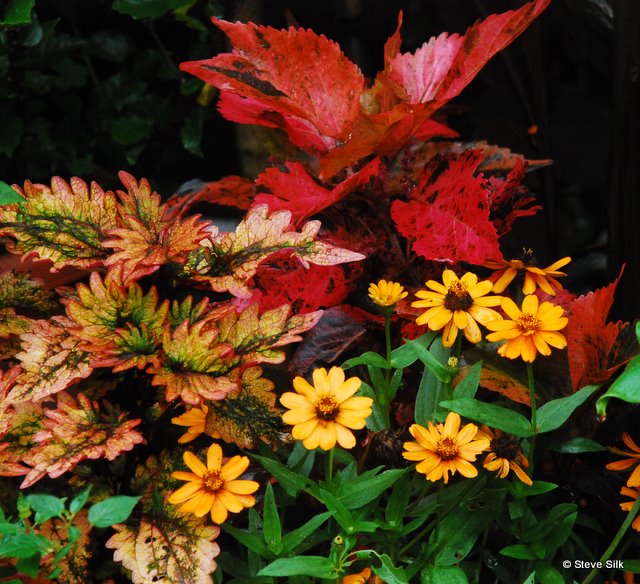
 Last month I started my seasonal orange bender. It being the color of all kinds of wonderful things, from mangoes to sunsets to campfire embers. I can’t get enough of it–in the garden or elsewhere. So I shared some of my favorite flowers and promised a return to the topic with a post on good leaves for orange themes. Here goes:
Last month I started my seasonal orange bender. It being the color of all kinds of wonderful things, from mangoes to sunsets to campfire embers. I can’t get enough of it–in the garden or elsewhere. So I shared some of my favorite flowers and promised a return to the topic with a post on good leaves for orange themes. Here goes:
Since I’m endlessly enamored of monochromatic color schemes, or at least mini-chromatic color schemes, I like to explore the subtleties of a single color in a container, container grouping, or–less frequently– as part of a bed or border. Sometimes the intensity I strive for in a pot looks overdone when the same scene is exploded into the more sizable scale of the garden at large. So I try to keep it fairly simple. Contained. So when it comes to the leaves, a nice deep green is always good–it’s the one garden color that unfailingly goes with all others–but I want leaves that add to my color scheme, not those that simply hold a place, or contribute solely shape and texture. I want it all. So, I want orange. As it turns out there are a surprising number of plants that bear orange foliage.
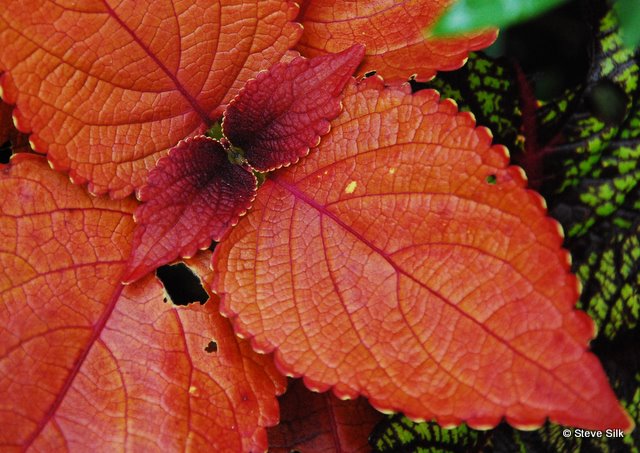
Perhaps best known is coleus (Solenostemonspp. and cultivars). I can name a few off the top of my head…’Sedona’, ‘Rustic Orange’, ‘Copper Queen’…those are almost all orange and there are a whole slew of cultivars which boast smoldering tones of orange or that yummy deep bronze that looks so smashing with orange. But with coleus I just don’t care a whole lot about names. I care about availability, so I usually just grab whatever I can find that comes close to doing the job for me. Maybe I’m just lucky since I can almost always find ‘Sedona’ or ‘Rustic Orange’ at one of the local garden centers.
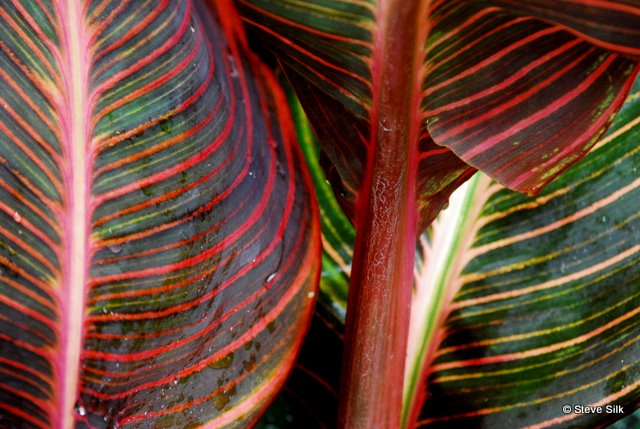
A good coleus is all the companion a good orange flower might need but it gets better if you throw in an additional player. My go-to plant for for elevating a basic two-fer is Canna ‘Tropicanna’. The bold swaths of its leaves–luridly striped in pinks, bronzes and a whole panoply of orange–are a sure to get attention. I usually place them at the rear of any composiition since they create a stunning backdrop. They even get orange flowers, and though they aren’t the most appealing of blooms (I often lop them off) they do add a certain je-ne-sais-quoi to any effort aimed at going right over the top.
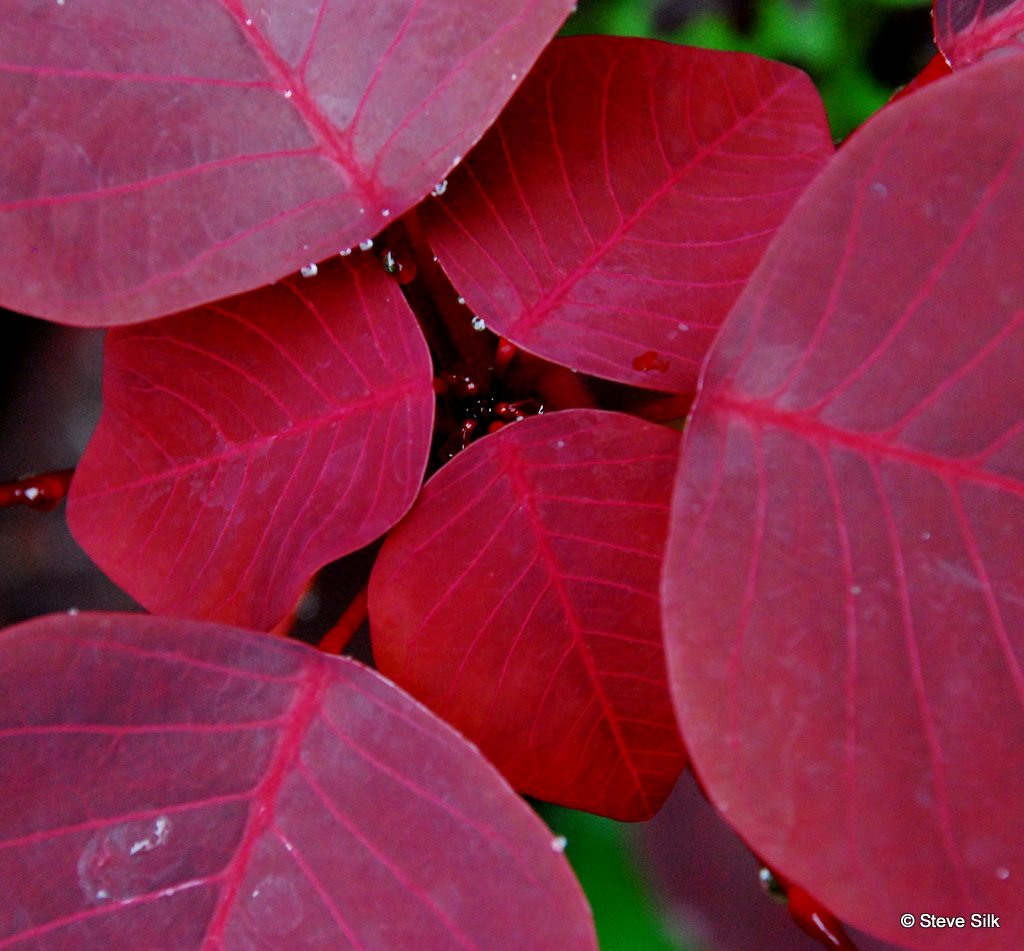
More subtle is the tropical smokebush (Euphorbia cotinifolia). Its smoldering, garnet-colored leaves are companionable with almost any sizzling hot color, especially reds, and most especially oranges. Salmon-tinged oranges in particular sing with this fantastic plant, but pure oranges make beautiful music as well.

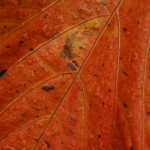 I’m never sure how to pronounce Acalypha, but you don’t have to be able to say it in order to like it. And I do like it. Or, more precisely, I like them. There’s an awful lot of acalyphas out there, and near as I can tell they all look good with orange. So many leaf shapes too. There’s one simple leaf shaped cultivar bigger than my outstretched hand; a little silver dollar or so sized one with dark burgundy centers surrounded by a ring of orange, and there’s one with raggedy little leaves almost like a fern that boasts an orange variegation to boot. And that’s just for starters.
I’m never sure how to pronounce Acalypha, but you don’t have to be able to say it in order to like it. And I do like it. Or, more precisely, I like them. There’s an awful lot of acalyphas out there, and near as I can tell they all look good with orange. So many leaf shapes too. There’s one simple leaf shaped cultivar bigger than my outstretched hand; a little silver dollar or so sized one with dark burgundy centers surrounded by a ring of orange, and there’s one with raggedy little leaves almost like a fern that boasts an orange variegation to boot. And that’s just for starters.
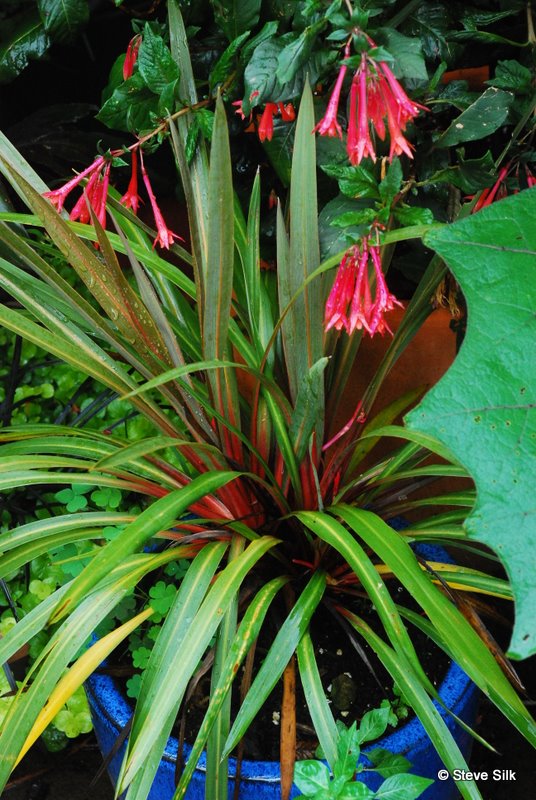
 Last but certainly not least comes the spikey stuff: phormiums, dracaena, those burgundy pennisetums, cordylines. Any of these in colors ranging from an outright orange to rusty brown and bronzey burgundy look stunning with orange. The spikey foliage like that of Cordyline ‘Sundance’, above , or the Dracaena “Home Depot” *actually I think its ‘Tricolor’) at left, complements most any flower I can think of (and most any leaf too) so its hard to go wrong using these with orange. So go ahead, give it, or any of these a try. Orange being a love-it or hate-it color, all you have to lose is your reputation for good taste.
Last but certainly not least comes the spikey stuff: phormiums, dracaena, those burgundy pennisetums, cordylines. Any of these in colors ranging from an outright orange to rusty brown and bronzey burgundy look stunning with orange. The spikey foliage like that of Cordyline ‘Sundance’, above , or the Dracaena “Home Depot” *actually I think its ‘Tricolor’) at left, complements most any flower I can think of (and most any leaf too) so its hard to go wrong using these with orange. So go ahead, give it, or any of these a try. Orange being a love-it or hate-it color, all you have to lose is your reputation for good taste.
